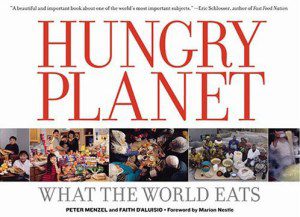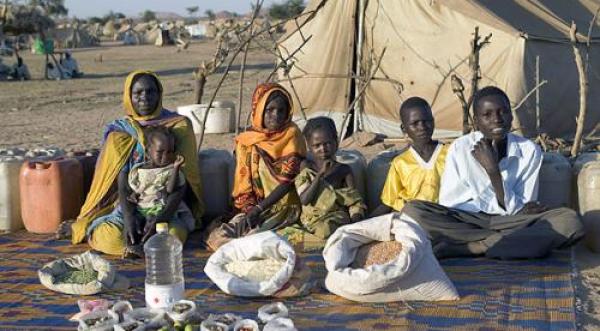 Data visualization may hold its mesmerism as a tool of illumination, but but even the most original ways of presenting data can fail to make that eye-opening, visceral impact on us — what usually remains in the heart are not scientific analyses and cold facts but emblematic events (Woodstock), inspiring words (Martin Luther King, Jr.) or riveting photographs (D-day bombing).
Data visualization may hold its mesmerism as a tool of illumination, but but even the most original ways of presenting data can fail to make that eye-opening, visceral impact on us — what usually remains in the heart are not scientific analyses and cold facts but emblematic events (Woodstock), inspiring words (Martin Luther King, Jr.) or riveting photographs (D-day bombing).
Which is what makes Peter Menzel and Faith D’Alusio’s Hungry Planet: What the World Eats (public library) so powerful — a photographic journey to 24 countries, where the authors stayed with 30 different families for a week each, documenting on paper and film what these families ate and how much it cost.
Each photograph depicts all the family members in their home environment, surrounded by a week’s worth of groceries.

Food expenditure for one week: $341.98
Image copyright Peter Menzel, menzelphoto.com
Food expenditure per week: 573 Quetzales ($75.70)
Image copyright Peter Menzel, menzelphoto.com
There’s something very special about the photograph and its ability to encapsulate the time’s vibe, condensing big amounts of information — cultural, political, economic — in a commentary that engages us emotionally. The student standing in front of a tank on Tiananmen Square. The Pulitzer-Prize-winning photo of a vulture stalking a starved child. National Geographic’s iconic Afghan girl. Even without the full contextual facts about these photos, they somehow make us get “it.” And Hungry Planet does just that.
Comparing these images makes for some shocking conclusions, both funny and sad — prolific fodder for sociology, economics, and anthropology college papers alike. But to stick to our point here, we’ll seize elaboration and let the photographs speak.
Food expenditure per week: 481.14 Australian dollars ($376.45)
Image copyright Peter Menzel, menzelphoto.com
Food expenditure per week: 37,699 Yen ($317.25)
Image copyright Peter Menzel, menzelphoto.com

Food expenditure per week: 387.85 Egyptian Pounds ($68.53)
Image copyright Peter Menzel, menzelphoto.com

Food expenditure per week: 685 CFA Francs ($1.23)
Image copyright Peter Menzel, menzelphoto.com
Grab a copy of Hungry Planet for a pause-giving perspective on a basic human right we’ve come to take for granted.



